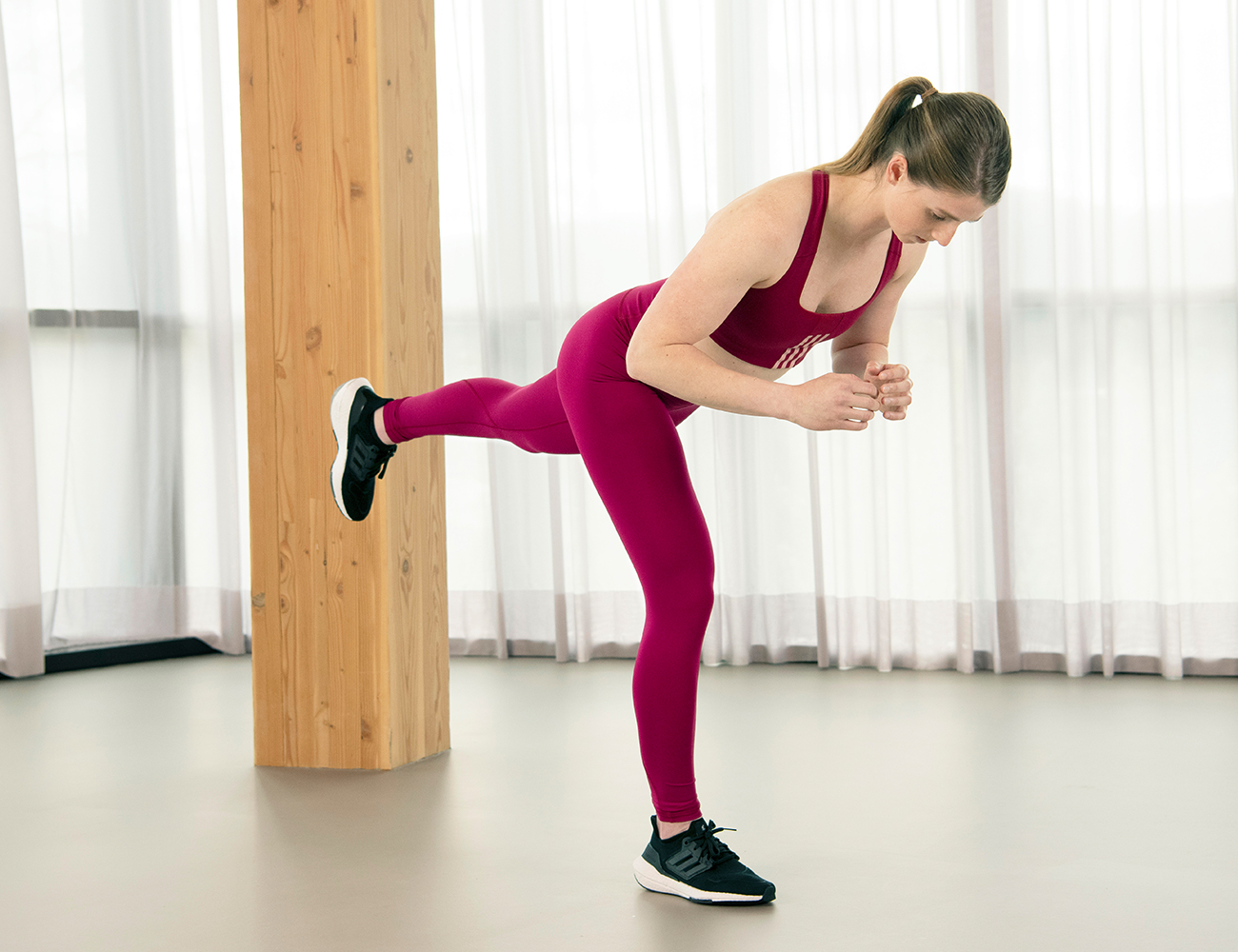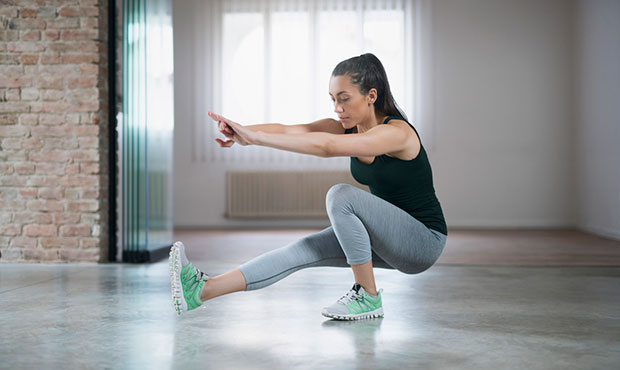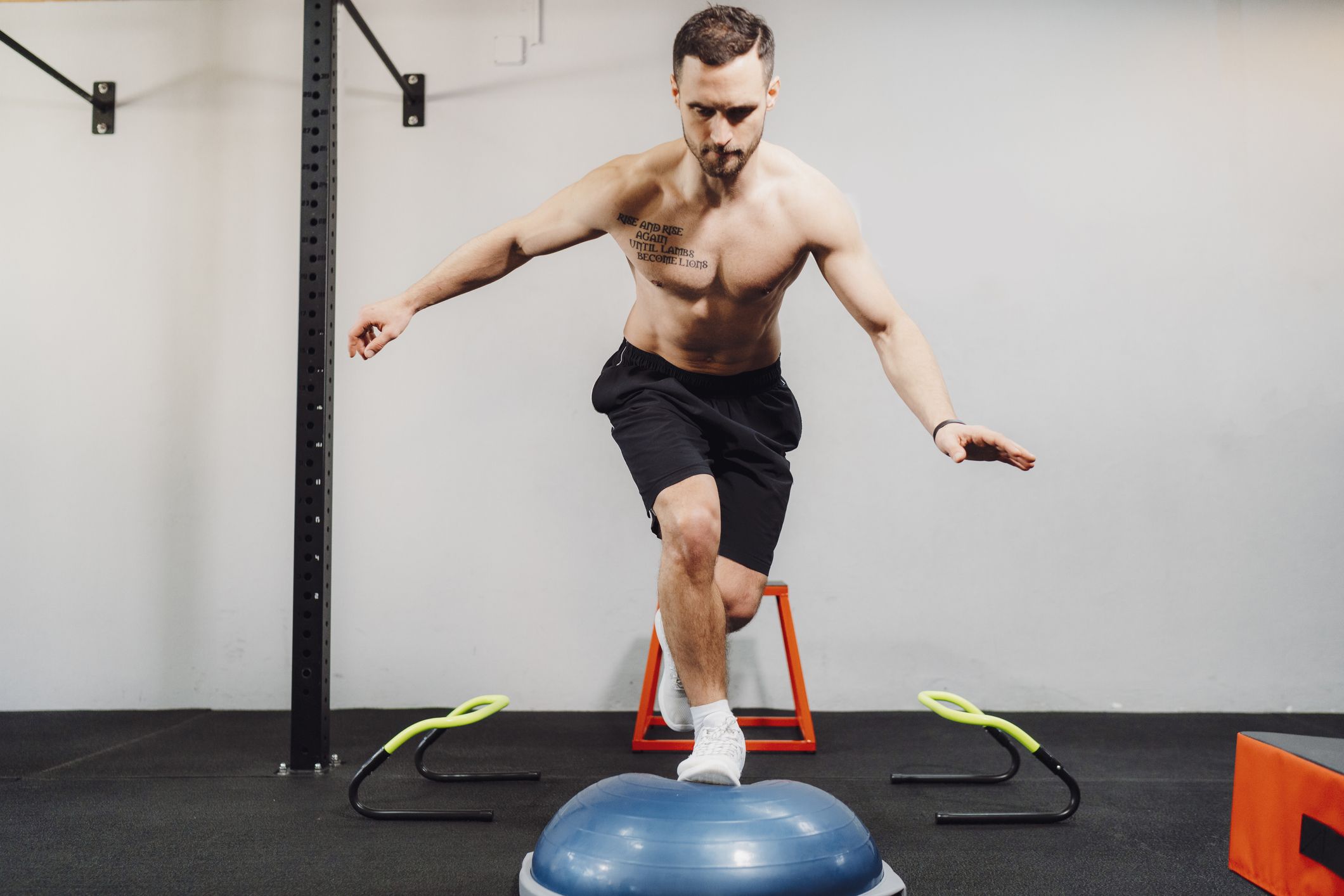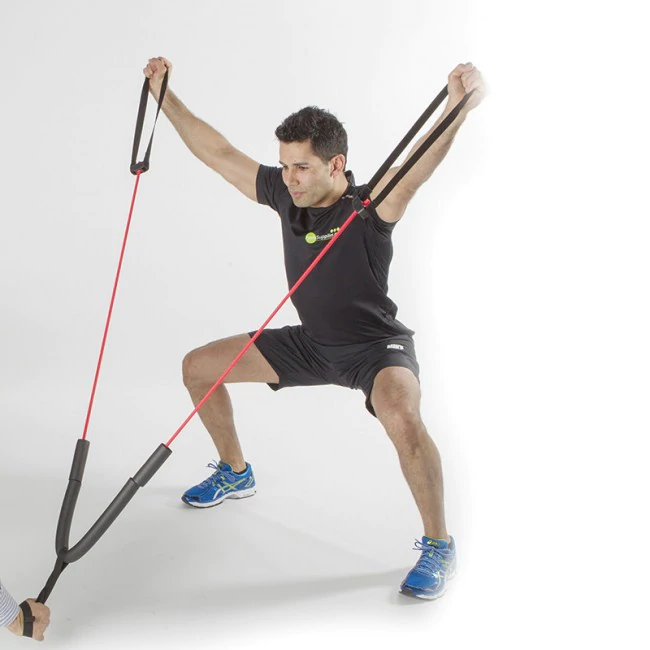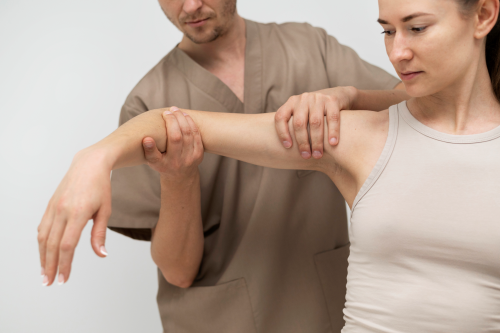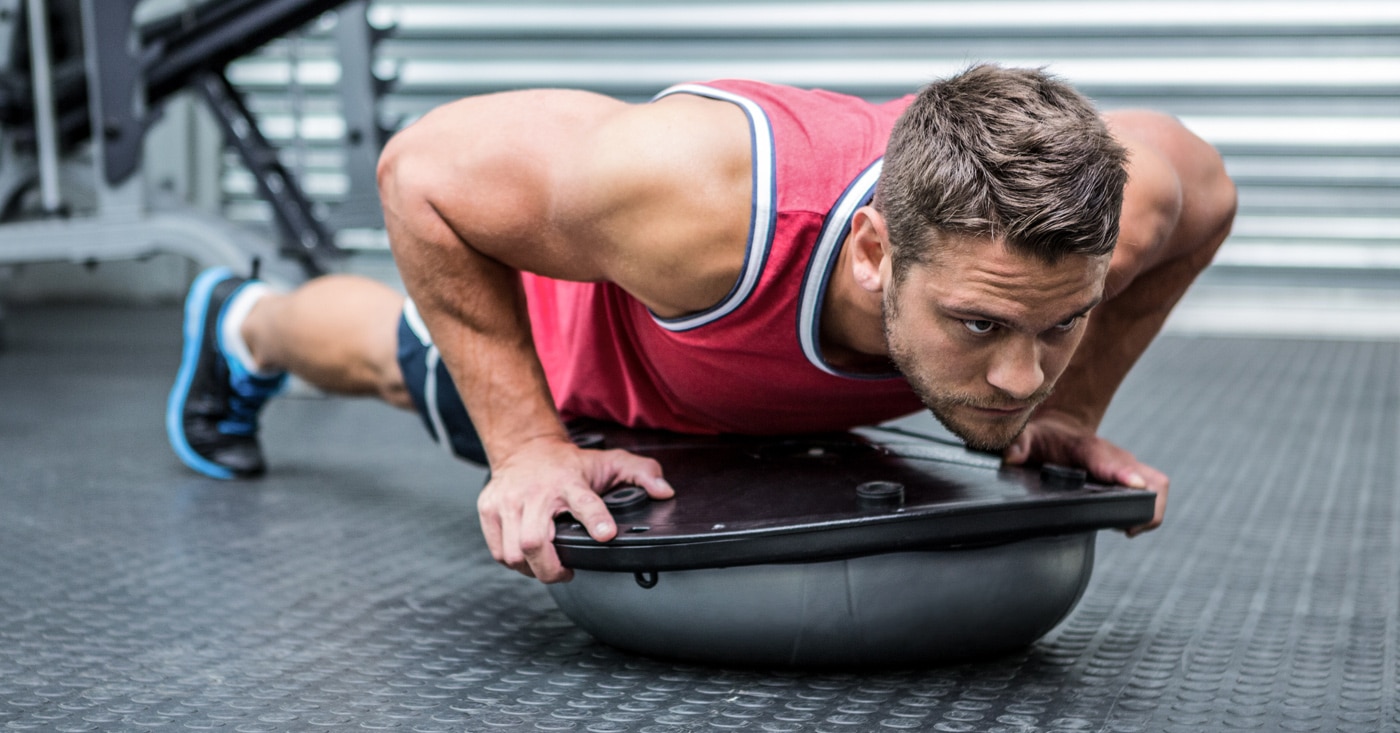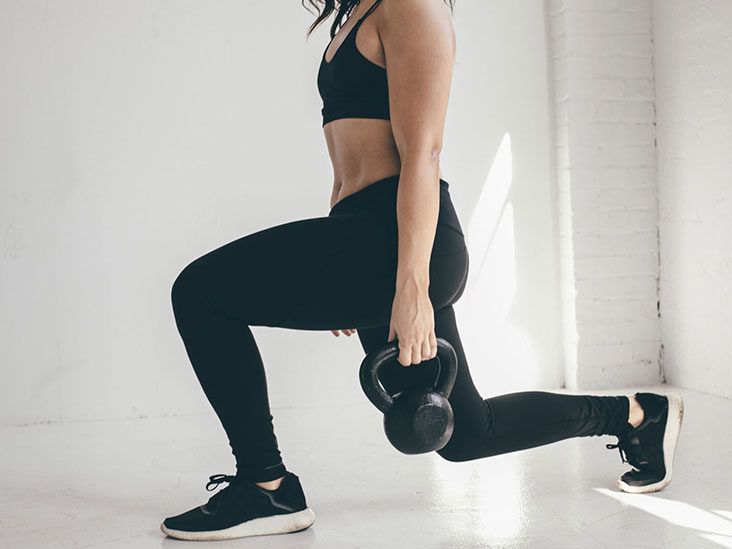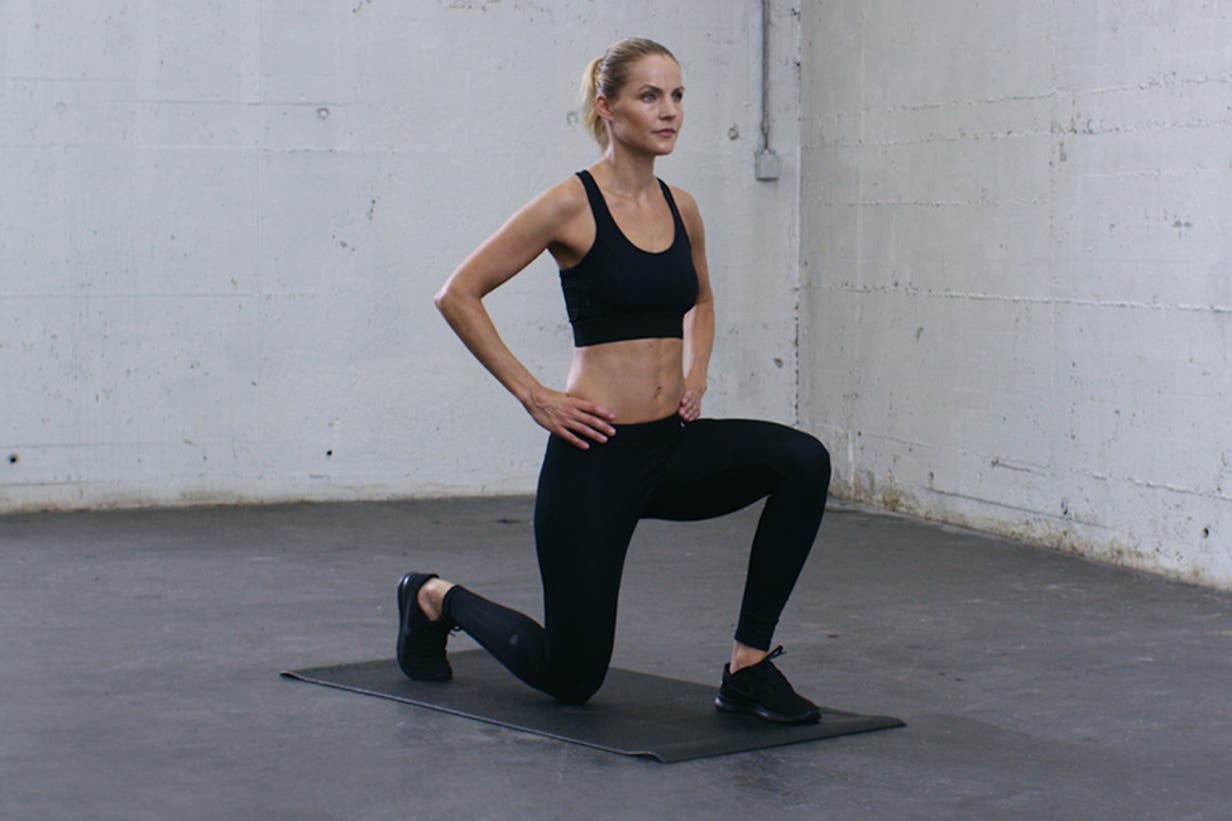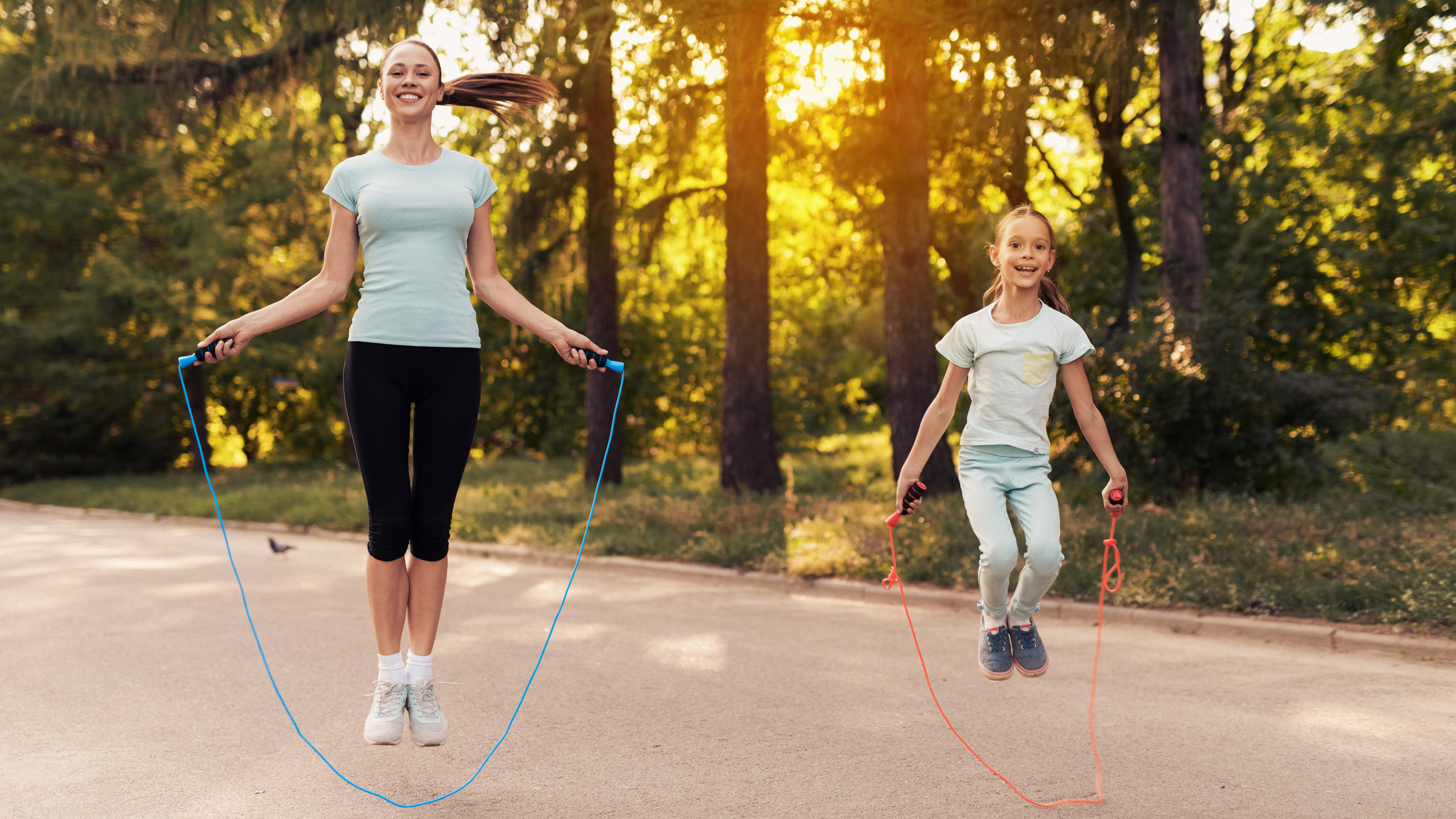Saturday, November 16, 2024
"Weighted Equilibrium Activities: Upgrading Solidness and Strength"
"The Arm and Leg Reach (Bird Canine) Exercise: A Thorough Examination"
"Arm and Leg Reach"
1. Biomechanics and Appropriate Structure
Beginning Position:
Commitment:
Development:
Hold and Return:
2. Muscle Gatherings Focused on
Center Muscles:
Spinal Erectors:
Gluteus Maximus and Gluteus Medius:
Shoulder and Arm Muscles:
3. Key Advantages
Center Solidness:
Diminished Chance of Back Injury:
Equilibrium and Coordination:
Restoration and Prehabilitation:
4. Movements and Varieties
Standard Bird Canine with Hold:
Weighted Bird Canine:
Bird Canine with Knee Tap:
Single-Appendage Bird Canine:
Unsound Surface Bird Canine:
5. Normal Errors and How to Stay away from Them
Curving the Lower Back:
Turning the Middle:
Racing Through the Development:
Lifting Excessively High:
6. Wellbeing Contemplations
People with Existing Back Torment:
Keep up with Arrangement:
Begin Gradually:
7. Logical Experiences and Studies
8. Coordinating the Bird Canine into a Gym routine Daily practice
Warm-Up:
Fundamental Everyday practice:
Cool-Down:
9. End;
Thursday, November 14, 2024
"Side-to-Side Hops: A Comprehensive Analysis"
"Side-to-Side Hops"
1.
2.
Legitimate strategy includes:
Beginning Position:
Execution:
Redundancy:
3.
Key muscles enacted include:
Quadriceps and Hamstrings:
Calves (Gastrocnemius and Soleus):
Center Muscles:
Improved Horizontal Power:
Further developed Deftness and Coordination:
Equilibrium and Proprioception:
4.
In recovery, controlled sidelong activities help in:
Supporting Tendon Strength:
Moderate Stacking:
5.
varieties of side-to-side bounces can be executed:
Single-Leg Parallel Bounces:
Sidelong Skater Jumps:
Weighted Side-to-Side Bounces:
benefits and lessen injury gambles:
Right Structure:
Staying away from Mix-ups:
Exorbitant Forward Inclining:
Arriving on Solid Legs:
Shallow Scope of Movement:
7.
Insurances should be taken to limit injury:
Warm-Up Everyday practice:
Moderate Over-burden:
Rest and Recuperation:
8.
Regimens can be exceptionally successful:
Plyometric Circuits:
HIIT Exercises:
Sports-Explicit Drills:
9.
Including side-to-side bounces, in supporting athletic execution:
Muscle Actuation Studies:
Execution Upgrade:
Recovery Advantages:
10.
" Achieving Optimal Clock Reach: Challenges, Techniques, and Applications"
"Clock Reach"
1. Significance of Clock Synchronization
Advanced Frameworks and Correspondence:
Media communications:
2. Challenges in Accomplishing Ideal Clock Reach
Signal Debasement:
Stage Commotion:
Clock Float:
3. Methods for Broadening Clock Reach
Clock Dissemination Organizations (CDNs):
Stage Locked Circles (PLLs) and Deferral Locked Circles (DLLs):
Buffering and Once again timing:
Utilization of Coordinated Timekeepers:
4. Uses of Clock Arrive at Improvement
Registering and Server farms:
Telecom Organizations:
Dispersed Record Innovation (DLT):
Modern Mechanization and IoT:
5. Future Patterns and Exploration in Clock Reach
Nuclear Timekeepers and Accuracy Timing:
Progresses in Organization Conventions:
Optical Time Move:
6. End;
Taking care of various papers?
Wednesday, November 13, 2024
"Hip Kidnapping Activities: Fortifying and Settling the Lower Body"
"Hip Abduction Exercises"
Hip snatching practices are fundamental for building solid hip muscles that add to pelvic security, equilibrium, and by and large lower-body strength. The essential muscles engaged with hip snatching incorporate the gluteus medius, gluteus minimus, and tensor fasciae latae (TFL). These muscles assume an imperative part in sidelong leg development and adjustment during exercises like strolling, running, and adjusting on one leg. Integrating hip snatching practices into an exercise routine improves athletic execution as well as lessens the gamble of wounds connected with feeble or immature hip muscles. This far reaching guide will investigate the life systems, advantages, and fundamental activities for hip kidnapping.
Life structures of the Hip Abductors
The hip abductors comprise of three primary muscles:
Gluteus Medius:
This muscle lies under the bigger gluteus maximus and is basic for hip security. It upholds parallel developments and is answerable for keeping the pelvis level during weight-bearing exercises.
Gluteus Minimus:
The littlest of the gluteal muscles, the gluteus minimus works synergistically with the gluteus medius to help hip snatching and inside turn.
Tensor Fasciae Latae (TFL):
Situated outwardly of the hip, the TFL helps in hip kidnapping and balances out the knee through the iliotibial (IT) band.
Advantages of Hip Kidnapping Activities
1. Further developed Soundness and Equilibrium Solid hip abductors assist with keeping up with equilibrium and backing the pelvis, which is fundamental for exercises that require remaining on one leg or moving load from one side to another. This is especially significant in sports, dance, and useful wellness developments.
2. Upgraded Athletic Execution Competitors frequently depend on parallel developments and speedy directional changes. Advanced hip abductors further develop deftness and power, considering better execution in sports like soccer, tennis, and b-ball.
3. Injury Counteraction Frail hip abductors can prompt knee torment, lower back uneasiness, and conditions like IT band disorder. Reinforcing these muscles adjusts the hips and knees, lessening strain and forestalling normal wounds.
4. Better Stance and Arrangement Solid hip muscles add to keeping up with legitimate stance, particularly during strolling and standing. Adjusted hip abductors forestall extreme shifting or swinging of the hips, advancing a better arrangement.
Viable Hip Kidnapping Activities
1.
Side-Lying Leg Raises A key activity that separates the gluteus medius and gluteus minimus, side-lying leg raises are phenomenal for novices and high level wellness lovers the same.
The most effective method to Perform:
- Lie on your side with your legs expanded and stacked.
- Support your head with your arm and put the contrary hand on the floor for balance.
- Lift your top leg toward the roof without pivoting your hips or moving the lower leg.
- Gradually further the leg back down and rehash for 10-15 reps prior to exchanging sides.
Tips:
- Keep the development slow and controlled for most extreme muscle commitment.
- To increment trouble, utilize a lower leg weight or an obstruction band around the thighs.
2.
Standing Hip Kidnapping This variety is performed while standing and draws in the hip abductors alongside balancing out muscles.
Step by step instructions to Perform:
- Stand upstanding with feet hip-width separated, clutching a seat or wall for help.
- Shift your weight to the passed on leg and lift the right leg to the side without inclining your middle.
- Bring down the leg gradually and rehash for 12-15 reps on each side.
Tips:
- Center around enacting the gluteus medius by crushing the side of the hip during each lift.
- An obstruction band around the lower legs adds power to the activity.
3.
Clamshells focus on the gluteus medius and are especially valuable for initiating muscles before lower-body exercises.
The most effective method to Perform:
- Lie on your side with knees bowed at a 45-degree point and legs stacked.
- Hold your feet together and lift your top knee as high as conceivable without turning the hips.
- Gradually further the knee back down and rehash for 15-20 reps on each side.
Tips:
- Keep up with control all through the development and try not to allow the hips to move back.
- An obstruction band around the thighs improves muscle commitment.
4.
Fire Hydrants A powerful activity that objectives the hip abductors and glutes, fire hydrants are named for their likeness to a canine lifting its leg.
Instructions to Perform:
- Begin each of the fours with hands straightforwardly under shoulders and knees under hips.
- Keeping the knee bowed at a 90-degree point, lift one leg out to the side until the hip is at a 45-degree point.
- Bring down the leg back to the beginning position and rehash for 12-15 reps on each side.
Tips:
- Connect with the center to keep a steady middle and forestall shifting.
- Add an opposition band over the knees for an additional test.
5.
Sidelong Band Strolls Horizontal band strolls are perfect for working the hip abductors and TFL while working on hip security.
Instructions to Perform:
- Place an opposition band around your thighs or lower legs and stand with feet hip-width separated.
- Lower into a semi-squat position, keeping your chest up and center locked in.
- Step sideways with one foot, trailed by the other, keeping up with strain in the band.
- Steer 10-15 stages in a single bearing prior to changing to the opposite side.
Tips:
- Keep your means controlled to augment muscle enactment.
- Guarantee the knees don't buckle internal during the development to keep up with appropriate arrangement.
6.
Link Hip Snatching For those with admittance to rec center gear, the link machine can give reliable obstruction and increment muscle enactment.
Step by step instructions to Perform:
- Join a lower leg lash to the low pulley of the link machine and secure it around one lower leg.
- Stand sideways to the machine, clutching the handle for help.
- Lift the leg with the connected lash out to the side in a controlled movement.
- Get back to the beginning position and rehash for 10-12 reps prior to exchanging sides.
Tips:
- Begin with a sensible weight and spotlight on smooth developments.
- Try not to incline away from the machine; keep your middle upstanding and center locked in.
- Incorporating Hip Snatching Activities into an Everyday practice
For adjusted lower-body preparing, hip snatching activities ought to be performed 2-3 times each week, either as a component of a leg day or as a valuable daily practice to upgrade strength and steadiness.
Model Daily schedule:
Warm-Up:
5-10 minutes of dynamic extending or light cardio.
Initiation Circuit:
Clamshells:
2 arrangements of 15 reps for each side.
Fire Hydrants:
2 arrangements of 12 reps for each side.
Strength Activities:
Side-Lying Leg Raises:
3 arrangements of 15 reps for every side.
Standing Hip Snatching:
3 arrangements of 12 reps for every side.
Finisher:
Horizontal Band Strolls:
2 arrangements of 10 stages for each side.
Cool Down:
Extending zeroed in on the hip flexors, glutes, and lower back.
Security Contemplations and Tips
1. Begin Gradually Start with bodyweight activities or light opposition until appropriate structure is accomplished. Advancing excessively fast can prompt muscle strain or irregular characteristics.
2. Keep up with Structure Guarantee that the hips don't pivot or shift unreasonably during works out. This disengages the hip abductors and forestalls the utilization of compensatory muscles.
3. Warm Up and Chill Off Consistently incorporate a get ready to set up the muscles and joints for practice and a cool-down to improve adaptability and recuperation.
4. Consistency is Key Ordinary act of hip kidnapping activities will prompt more grounded, more steady hips and diminished chance of injury.
End;
Integrating hip snatching practices into your exercise routine can altogether improve lower-body strength, equilibrium, and security. With developments like side-lying leg raises, clamshells, and horizontal band strolls, you can initiate and fortify the gluteus medius, gluteus minimus, and TFL. These activities work on athletic execution as well as assist with forestalling wounds and keep up with legitimate body arrangement. By focusing on structure and steadily expanding opposition, you can major areas of strength for fabricate, hips that help a large number of exercises and developments.
"Bosu Ball Activities: A Complete Manual for Developing Fortitude and Dependability"
"Bosu Ball Exercises"
Advantages of Preparing with a Bosu Ball
Key Bosu Ball Activities for Strength and Security
1.
Instructions to Perform:
- Stand on the arch side with feet shoulder-width separated.
- Connect with your center and keep your chest up.
- Gradually twist your knees and lower your body as though sitting once more into a seat.
- Push through your heels to get back to the beginning position.
Benefits:
- Further develops lower-body strength and equilibrium.
- Enacts the quadriceps, hamstrings, glutes, and center stabilizers.
2.
Step by step instructions to Perform:
- Flip the Bosu ball with the goal that the level side faces up and put your hands on one or the other side of the stage.
- Expect a board position, keeping your body in an orderly fashion from head to toe.
- Bring down your chest toward the Bosu ball, guaranteeing your elbows stay at a 45-degree point.
- Push back up to the beginning position.
Benefits:
- Improves chest, shoulder, and rear arm muscle strength.
The most effective method to Perform:
- Connects with center muscles for equilibrium and solidness.
3.
Stand with the Bosu ball before you (arch side up).
- Step your right foot onto the ball and lower into a jump until the two knees structure 90-degree points.
- Push through your right heel to get back to the beginning position.
- Switch legs in the wake of finishing a set.
Benefits:
- Increments lower-body strength, particularly in the quadriceps and glutes.
- Further develops proprioception and joint steadiness.
4.
Instructions to Perform:
- Begin in a board position with your hands on the level side of the Bosu ball.
- Substitute driving your knees toward your chest as fast as could really be expected.
- Keep your center tight and hips level all through the development.
Benefits:
- Develops perseverance and improves center fortitude.
- Raises the pulse for an extreme focus exercise.
5.
Step by step instructions to Perform:
- Lie on your back with your feet put on the vault side of the Bosu ball and arms by your sides.
- Push through your heels, lifting your hips until your body frames a straight line from your shoulders to your knees.
- Press your glutes at the top and lower down leisurely.
Benefits:
- Fortifies the glutes, hamstrings, and lower back.
- Works on hip strength.
- High level Bosu Ball Varieties
6.
The most effective method to Perform:
- Stand with one foot on the arch side of the Bosu ball.
- Pivot forward at the hips while broadening the contrary leg behind you.
- Keep your back level and center connected as you lower until your chest area is almost lined up with the floor.
- Get back to the beginning position utilizing controlled development.
Benefits:
- Fortifies the back chain (hamstrings, glutes, and lower back).
- Upgrades single-leg equilibrium and center strength.
7.
Instructions to Perform:
- Expect a lower arm board position with your elbows on the vault side of the Bosu ball.
- Hold a standard board or add varieties like side-to-side hip plunges to connect with the obliques.
Benefits:
- Fortifies the whole center, including the profound balancing out muscles.
- Advances generally body security and stance.
8.
The most effective method to Perform:
- Hold the Bosu ball (level side up) in your grasp.
- Bounce down into a board position, put the Bosu ball on the ground, and grasp the edges.
- Play out a push-up, hop your feet forward, and stand up while lifting the Bosu ball above.
Benefits:
- Draws in different muscle bunches for a focused energy cardio and strength exercise.
- Upgrades coordination and dangerousness.
Tips for Compelling Bosu Ball Exercises
Security Contemplations
End;
"Lurches with Center Commitment: Amplifying Strength and Steadiness"
"Lunges with Core Engagement"
Lurches are a primary lower-body practice that focus on the quadriceps, glutes, hamstrings, and calves. By adding center commitment, rushes change from a straightforward leg exercise to a compound activity that upgrades equilibrium, coordination, and center strength. This double center works on generally strength as well as adds to better athletic execution and injury counteraction. This piece investigates how incorporating center commitment into rushes can improve preparing, upgrade practical development, and advance strong perseverance.
Life systems of the Thrust
A thrust is a unique development where one leg ventures forward, bringing down the hips until the two knees are twisted at roughly 90 degrees. While the front leg works fundamentally to help body weight and work with the plunge and rising, the back leg goes about as a stabilizer. Here is a breakdown of the essential muscles included:
Quadriceps:
The huge muscle bunch on the facade of the thigh, answerable for broadening the knee.
Gluteus Maximus and Medius:
The essential muscles for hip expansion and parallel security.
Hamstrings:
Situated at the rear of the thigh, these muscles aid knee flexion and hip expansion.
Calves:
Add to adjust and adjustment during the activity.
Adding conscious center commitment includes enacting the rectus abdominis, cross over abdominis, and diagonal muscles, which assume a critical part in keeping up with stance and equilibrium.
Advantages of Consolidating Center Commitment;
1. Upgraded Soundness and Adjust Jumps as of now require coordination and equilibrium, however consolidating center enactment strengthens this prerequisite. Drawing in the center muscles helps keep the chest area stable and forestalls influencing, particularly during single-leg developments. This security is fundamental for exercises like running, hopping, and taking a different path in sports.
2. Further developed Useful Strength Practical strength alludes to the capacity of muscles to cooperate during genuine exercises. The mix of thrusts and center commitment prepares the body to move power between the upper and lower body really, which is basic for everyday exercises like climbing steps, lifting items, or standing up from a situated position.
3. Injury Avoidance Center strength assumes a fundamental part in forestalling wounds, especially in the lower back. At the point when the center is powerless, the lumbar spine makes up for this absence of steadiness, prompting expected strain or constant torment. Performing jumps with cognizant center commitment builds up the body's regular support, safeguarding the spine and further developing stance during different developments.
Mechanics of Lurches with Center Commitment
To amplify the viability of thrusts with center commitment, zeroing in on appropriate structure and technique is fundamental:
Bit by bit guide:
Beginning Position:
Stand tall with feet hip-width separated, shoulders back, and chest lifted. Connect with the center by drawing the navel toward the spine without pausing your breathing.
Execution:
Step Forward:
Move forward with the right foot, guaranteeing the distance permits the two knees to twist easily at 90 degrees without the back knee contacting the ground.
Bring down the Hips:
Gradually twist the two knees until the front thigh is lined up with the ground. Keep the middle upstanding and center drew in to forestall unreasonable forward inclining.
Push Back:
Drive through the impact point of the front foot to get back to the beginning position, keeping up with center initiation all through the development.
Reiteration:
Rehash on the contrary side and substitute.
Normal Missteps to Stay away from:
Knee Arrangement:
Guarantee the front knee doesn't reach out past the toes, which can strain the joint.
Curving the Back:
An angled back shows an absence of center commitment. Keep a nonpartisan spine to safeguard the lower back.
Losing Equilibrium:
Spotlight on center snugness to remain stable and diminish wobbling.
Varieties to Challenge the Center
To change it up and increment center association, take a stab at integrating these varieties into your daily schedule:
1. Weighted Lurches with Center Enactment Holding loads (hand weights or a hand weight) adds opposition and powers the center to connect more to keep up with stance and equilibrium. This variety can be performed by holding loads along the edges or on the shoulders.
2. Strolling Lurches with a Turn During the thrust stage, pivot the middle toward the front leg to enact the obliques. This bending movement upgrades center commitment and further develops spinal revolution strength, valuable for sports like tennis or golf.
3. Invert Thrusts with Above Reach Adding an above venture while venturing once more into a converse rush broadens the center muscles, empowering commitment for strength. It likewise further develops shoulder versatility and difficulties balance.
4. Bulgarian Split Squats with Center Enactment Lift one foot on a seat behind you, then play out a jump with the standing leg. This exceptional move requires huge equilibrium and center solidarity to forestall tipping forward.
5. Side Lurches with Center Fixing Side jumps (parallel rushes) include venturing aside, which enacts the gluteus medius and obliques. Draw in the center by deliberately fixing the stomach muscles all through the horizontal development to forestall trunk slant.
Breathing Methods for Ideal Center Commitment
Viable breathing keeps up with center commitment. The Valsalva move, where you take a full breath and hold it momentarily during the development's effort stage, can help make intra-stomach pressure. Nonetheless, for high-reiteration or bodyweight thrusts, a consistent breathe in breathe out design is more reasonable:
Breathe in:
While bringing down into the lurch.
Breathe out:
As you push back to the beginning position, fixing the center muscles.
Why Breathing Matters:
Breathing assists coordinate center muscle initiation with development. Controlled breathing additionally supports keeping up with concentration and diminishing exhaustion, particularly during focused energy exercises.
Coordinating Jumps with Center Work into a Preparation Schedule
For thorough preparation, rushes with center commitment can be remembered for both lower-body and full-body exercise meetings. Here is a model construction:
Lower-Body Centered Everyday practice:
Warm-Up:
5-10 minutes of dynamic extending (leg swings, hip circles)
Essential Activities:
Weighted lurches with center initiation: 3 arrangements of 12 reps for every leg
Bulgarian split squats:
3 arrangements of 10 reps for each leg
Center Combination:
Side rushes with center fixing:
2 arrangements of 15 reps for every side
Strolling rushes with a curve:
2 arrangements of 12 reps for each leg
Full-Body Schedule:
High-intensity aerobics:
Jumps with above reach: 3 arrangements of 10 reps for every leg
Push-ups:
3 arrangements of 15 reps
Squats with center commitment:
3 arrangements of 15 reps
Center Finisher:
Board varieties (side boards, lower arm boards) for 30 seconds each
Recuperation and Security Contemplations
Extending and Cool Down: Subsequent to performing jumps and center driven works out, a legitimate cool down is fundamental. Zero in on extends focusing on the quadriceps, hamstrings, glutes, and hip flexors to deliver pressure and forestall muscle solidness.
Security Tips:
Keep up with Appropriate Footwear:
Great foothold assists with balance.
Center around Control:
Slow, conscious developments are more powerful than surged reps.
Pay attention to Your Body:
Assuming you experience uneasiness in the knees or lower back, actually take a look at your structure or change the activity power.
End;
Jumps with center commitment are an amazing method for mixing lower-body reinforcing with center solidness preparing. This blend prompts further developed act, upgraded useful wellness, and a diminished gamble of injury. By integrating these activities into a balanced daily schedule and zeroing in on structure, people can open more prominent advantages and progress toward their wellness objectives with certainty.











